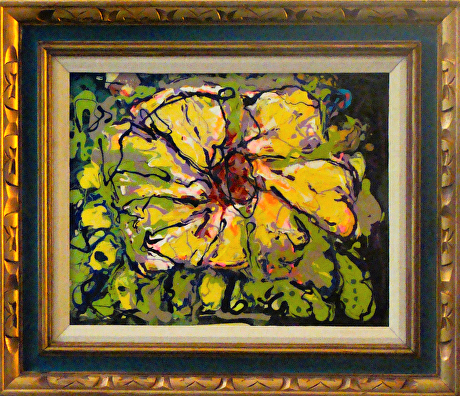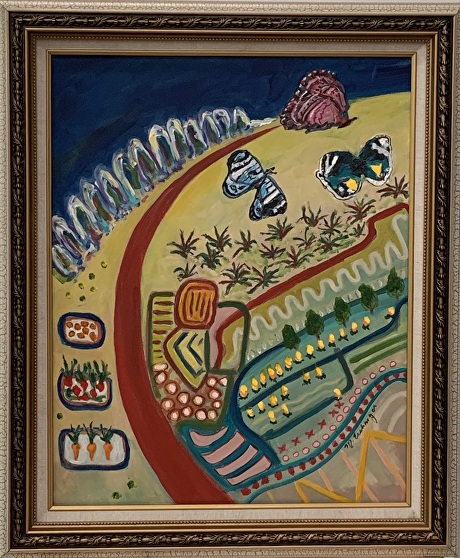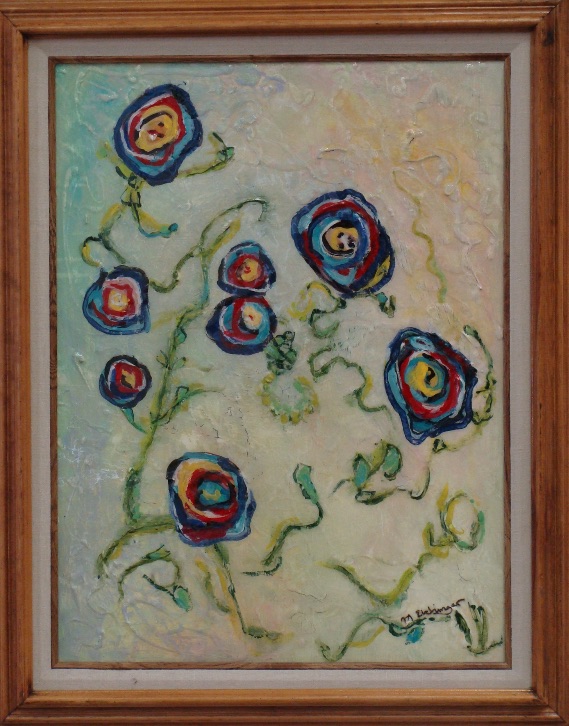
Grand Prize
More than thirty years ago, Martin Eichinger was invited to meet Stevie Wonder at a preview showing of the documentary, “The Secret Life of Plants.” Though an unusual gathering took place before the screening with women waiting outside his bedroom to be chosen as the evening’s escorts, Marty found the movie illuminating. Based on a bestselling book by Peter Tompkins and Christopher Bird, the film had a psychic documenting how plants communicate pain and joy. The plants were wired to oscilloscopes, electroencephalograms (EEGS), and other recordings to demonstrate Cosmic Consciousness and the mystical interconnectedness to life.
Replanting the Garden
Secret Lives of Plants
Marty reminded me of a segment showing plants connected to monitors reacting to a person in a monster mask chopping a plant to pieces. Other plants in the room responded to the brutality with silent screams. Several days later the masked monster returned again. The plants responded to its presence even though the monster acted in a passive manner this time. Was this science or fiction? Not sure, but the soundtrack by Stevie was a true Wonder.
Over the following decades, the science moved on. High-voltage imaging techniques show coronas around leaves that scientists call “a cold emission of electrons.” Occultists say it’s the “aura” some psychics see and use to detect illnesses.
Since becoming enamored of trees, I’ve read about how they communicate through chemical, hormonal, and slow-pulsing electrical signals that scientists are starting to decipher. To reach their enormous heights, Douglas Firs, for instance, depend on a complicated web of relationships and alliances known as the world wood web. It is a place where mother trees feed saplings with liquid sugar and warn neighboring trees when there is danger. When young foolhardy trees drink too much water, shed leaves when they shouldn’t, or light chase, they die.
Peter Wohlleben, German forester and author grabbed public attention when he wrote of the inner life of trees. No longer do foresters think of them as disconnected loners competing for nutrients and sunlight. They are not simply wood-producing systems battling for the survival of the fittest. Instead, they are communal and share collective intelligence through an underground microscopic network of hairlike root tips joining fungal filaments. The network provides a lifeline for young saplings in shaded parts of forests lacking the sunlight necessary for photosynthesis.
Distress signals about drought and insect infestations are also sent through the network. I’ve witnessed how stressed trees that are vulnerable will increase the number of seeds they produce in cones or in flying wing-like pods. A year two later the tree is dead and needs to be removed.
Trees also communicate through the air using pheromones (chemicals outside the tree that carry information to the receiving tree) and scent signals. Wohlleben writes, “When elms and pines come under attack by leaf-eating caterpillars, they detect the caterpillar saliva, and release pheromones that attract parasitic wasps. The wasps lay their eggs inside the caterpillars, and the wasp larvae eat the caterpillars from the inside out. “Very unpleasant for the caterpillars. Very clever of the trees.”
A grad student in British Columbia found that when bears eat salmon near trees, they leave their carcasses on the ground. The trees absorb salmon nitrogen they share with other trees through the network.
Plants, as well as trees, navigate life through the five senses of touch, sight, sound, smell, and taste. Many of the ideas presented by psychics thirty years ago are being legitimized by research. For example, to prevent damage, Mimosa leaves fold inwards when touched. Venus Flytraps snap shut when an unsuspecting insect touches a tiny hair on its leaf, setting off a chemical timer in the leaf that starts it digesting the prey. Botanists at the University of Missouri recorded the sound of caterpillars chewing on leaves. It produced defense chemicals in Arabidopsis that were similar to those released when the chewing was real. In Tel Aviv University Experiments, flowers increase the sugar content of their nectar when they hear recordings of a buzzing bee.
Plants “sniff” out neighbors to avoid rooting near toxic substances. These chemicals are detected through specialized receptors. And though trees don’t see as we do, they can distinguish different forms of light, from ultraviolet to infrared. Sunflowers face the sun and track its movement to maximize the sunlight they receive for photosynthesis. The Boquiila Trifoliate plant in Chile and Argentina, changes leaf shape, size, color, and vein patterns, mimicking the plant on which it grows. Why it’s able to mimic artificial plastic plants as well, is still unknown.
Overstimulated and stressed plants are calmed by anesthetics. They produce these compounds to lessen their injuries when wounded. Though the lives of plants are less hidden than before, there still is a lot to learn. A study by the Royal Horticultural Society showed that music and human vibrations from talking help plants grow faster. Yet it takes more than a chat to develop a green thumb. However, talking to your plants s a good way to get things off your chest. They won’t interrupt or argue back when you’re speaking.
Please share your experiences with plants on my blog site.
References:
First,E. (1973) The Secret Life of Plants. New York Times. retrieved from https://www.nytimes.com/1973/12/30/archives/the-secret-life-of-plants-by-peter-tompkins-and-christopher-bird.html
Grant, R. (2018) Do Trees Talk to Each Other? Smithsonian. retrieved from TALK.
Nichols,B.(2023) Plants have Feelings Too. BBC Earth. retrieved from https://www.bbcearth.com/news/plants-have-feelings-too
Calino, S. (2023) The case for talking to your houseplants. The Washington Post. retrieved from https://www.washingtonpost.com/home/2023/01/11/talking-to-plants-grow-thrive/
Art is always available. Grand Prize is an acrylic on canvas painting, framed, 24″ by 28″, available for $799.
Replanting the Garden is acrylic on canvas, framed, 20″ x 16″/ available for $495
Floating free is 29″ x 23″ acrylic on canvas framed painting, available for $725
Contact marilynne@eichingerfineart.com with questions.


